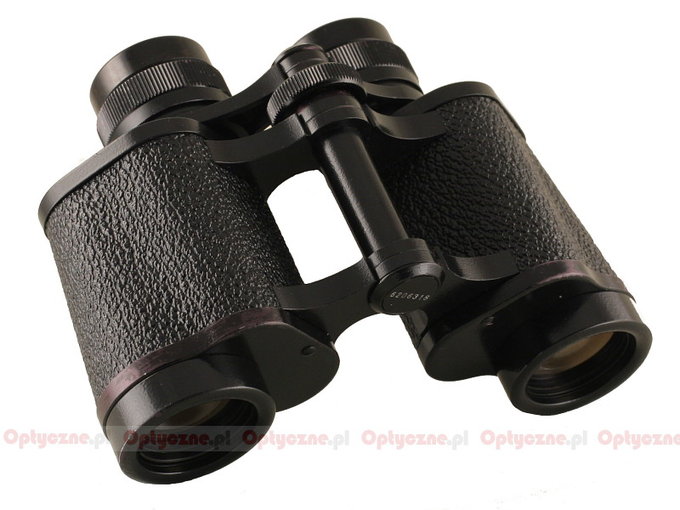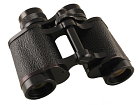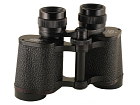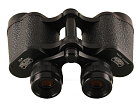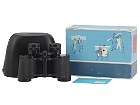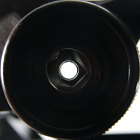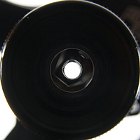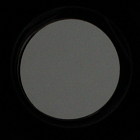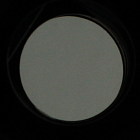Carl Zeiss Jena Deltrintem 8x30
These are classic Porro prism instruments with achromatic objectives. At first these binoculars contained 4 lens-elements ocular without any antireflection coatings. During the WWII one layer of magnesium fluoride coating was put on air-to-glass surfaces. In 1947 the ocular was replaced by an Erfle design with 5 lens-elements which was supposed to provide a wide field of view with minimum distortion level. In 1978 the producer started to use new multilayer coatings with the characteristic orange-purple hue.
Around 1990 when the Jena plant was taken over by the Docter company, the binoculars not only didn’t go out of production but even were given improved multi-coatings. Its production, already under the Doctor brand name, ceased only ca.1995.
The specimen we’ve tested is marked with a serial number of 6206318 which means it was produced in 1985 and, being so, it already boasts newer multilayer coatings. You can find a narrow strap and a small soft case included with the binoculars.
| Magnification | Lens diameter | Angular field of view | Prisms | Eye relief | Weight | Price |
|---|---|---|---|---|---|---|
| 8 | 30 | 150/1000(8.5o) | Bak-4/Porro | ? mm | 520 g | 400 PLN |
Summary
Pros:
- classic and solid casing,
- very wide field of view,
- high transmission level in the middle of the visible spectrum,
- slight astigmatism,
- chromatic aberration quite well-corrected,
- eyepieces can be set very wide apart,
- good quality of BaK-4 prisms.
Cons:
- significant blur at the edge of the field of view,
- distinctly yellow image,
- noticeable distortion,
- a lot of flares from the areas near prisms,
- small eye relief,
- slightly truncated pupils.
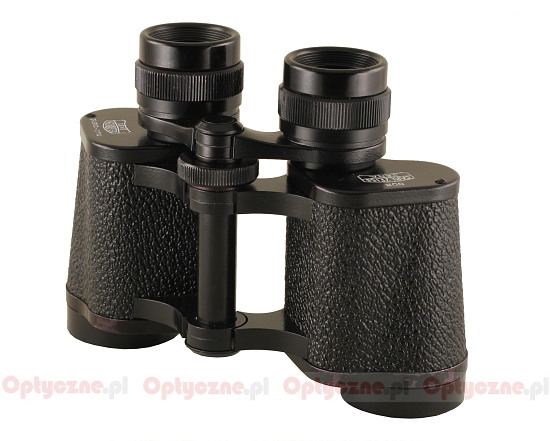 |
Our 8x32 class binoculars test couldn’t lack classic Zeiss devices from Jena. There were so many of them produced over the years that you can still find many well-cared-for specimens on the secondary market, available at a very affordable price - from around 50 to 150 Euro. While testing this pair of binoculars we were stimulated not only by sheer curiosity how an instrument produced 20 or 30 years ago compares with contemporary products but also by deep belief that it can outperform many devices currently produced in China. Time for a reality check.
Let’s start with evident advantages. The tested set of binoculars is 25-year-old. Despite some abrasions on the casing, being a result of ordinary wear and tear and more specifically frequent taking off and putting into the case, it is in a very good shape – we found no serious scratches or dents. Its optics is even in a better shape than the casing. The lenses are clean and flawless, without any mould inside. There are some specks of dust on the prisms but it is quite understandable taking into account the age of the device. Its condition places the workmanship quality in a very favourable light – after next twenty five years the Deltrintem 8x30, tested here, will look still the same, providing it is used in a similar way of course. I doubt whether any contemporary product made in China and bought for a sum not exceeding 250 Euro is able to survive equally well even a much shorter period of time.
The next advantage is the field of view. Once a huge field of view counted a lot and the Deltrintem boasts such a feature. It is almost by half a degree wider than the widest field of view found in contemporary competitors, even those very reputable.
The set of binoculars corrects astigmatism and chromatic aberration quite well. You can’t complain about the coma level too much either. The parameters, given by the producer, are followed with perfect exactitude – the objective lens’s diameter and magnification are in accordance with the numbers in documentation.
The classic Porro prism construction, not many optical elements and multilayer coatings made the transmission in the middle of the visual spectrum rather high, amounting to 92-93%. This result is very good – in fact other cheaper roof-prism instruments can only dream of it.
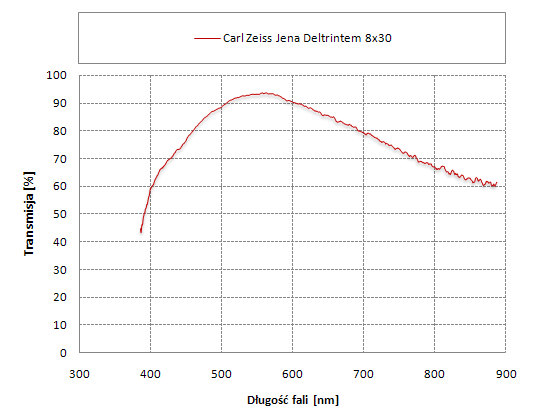 |
The colour fidelity can be a problem, though. In the 80s of 20th century the coatings were already multi-layered but still optimized only for the centre of visual spectrum. It had the effect which can be witnessed here - the transmission for yellow light is high but for blue and red it becomes even by 20% worse. As a result the image is seriously yellow.
As we’ve already passed to disadvantages, we must also mention the other negative points. The edge of the field of view, which is not sharp enough, and noticeable distortion can be certainly counted among them. What’s more, the usage of such wide-angle eyepieces made the exit pupils distinctly truncated.
Nowadays, most of binoculars, even those cheaper ones are waterproof and nitrogen-filled. In the case of the Deltrintem 8x30 we can’t count on that.
To sum up despite the passage of time the Deltrintem 8x30 seems to be still a very interesting option. Although you can get a bargain, usually you must pay for this device about 80-100 Euro, sometimes even 130 Euro. For such an amount of money you would be hard-pressed to find a really good 8x30 or 8x32 alternative so the Jena product is still attractive.
The risk, involved in purchasing anything on the second hand market is an issue, though. It happens very often that a set of binoculars touted by its seller as “in perfect condition” can be hardly described as such. This bad practice is notoriously common. As I needed to buy a lot of items on Allegro and e-bay to perform this test among other things, I could cite plenty of interesting cases from my own experience – I might be even tempted to write a separate article about it. Let me just state here that sometimes I drove to a seller just to have a look at a Jena pair of binoculars which had been touted as perfect only to find out that it was in appalling state – completely uncolimated or with huge amount of mould inside. Fakes are also a problem and the ingenuity people use in this area is really unlimited. Some cases I have seen decidedly deserve a place in the article I mentioned above.
Anyway if you decide to buy something on the second hand market you must give it your full attention – otherwise you might end up sending your bargain purchase to an optics specialists and paying extra money for repair or cleaning. I do recommend buying only from sources you can rely on and the direct contact is always the best.




